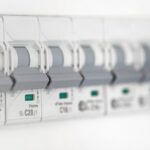When your appliances unexpectedly act up, frustration mounts, and solutions seem distant. Discover how everyday troubleshooting skills can empower you to tackle these issues head-on, saving time and money in the process. With this guide, demystify the common problems that often plague our household gadgets and appliances.
- Uncover proven steps to diagnose and effectively resolve common appliance issues with ease.
- Learn to accurately identify the root of the problem to streamline your troubleshooting efforts.
- Explore do-it-yourself techniques that ensure both safety and effectiveness in home repairs.
By diving into this guide, you’ll gain the confidence to handle appliance malfunctions and preserve the longevity of your household essentials. Let’s embark on this journey of appliance mastery and discover practical solutions that make home management a breeze.
Essential Steps in the Common Appliance Troubleshooting Guide
Troubleshooting home appliances might seem challenging, but with the right approach, it becomes a manageable task. Begin by understanding the manufacturer’s guidelines for your appliances. Each manual contains unique maintenance tips and troubleshooting advice tailored specifically for that appliance model.
Next, create a checklist for initial diagnostics. This could include checking power connections, resetting the appliance, and listening for unusual noises. Often, common issues can be traced back to simple problems like a tripped circuit breaker or a clogged filter.
It’s crucial to have the right tools at hand. A basic toolkit that includes a multimeter, screwdriver set, and pliers can be invaluable. These tools will help you safely examine electrical connections and secure loose parts, ensuring your DIY repairs are safe and effective.
Moreover, always prioritize safety. Ensure the appliance is unplugged before you begin any work. Wearing protective gear, like insulated gloves and safety goggles, is also advisable when working with electrical components.
Identifying the Problem Effectively
Effective problem recognition is key to swift and successful appliance troubleshooting. Start with a visual inspection to identify visible signs of damage or wear. Look for broken seals, frayed wires, or any obvious leaks. This can often provide immediate insight into the root of the problem.
Understanding common symptoms associated with appliance malfunctions can also aid in precise diagnostics. For instance, if a refrigerator is not cooling properly, this could indicate issues with the compressor or evaporator coil.
Listening to the appliance can also uncover clues. Unusual rattling sounds might signal internal loosening, while consistent clicking might point to relay or motor issues.
Documenting every symptom and attempted fix is equally crucial. This approach assists in pattern recognition if similar issues arise in the future and simplifies the process of consulting a professional if necessary.
DIY Fixes from the Common Appliance Troubleshooting Guide
When faced with typical household appliance problems, applying do-it-yourself solutions can often save you time and money, while also prolonging the lifespan of your machines. This section of the guide offers practical insights into safely and effectively addressing appliance malfunctions on your own. Let’s delve into some common issues and explore DIY methods to tackle them.
To ensure your appliances are running smoothly, it’s crucial to understand the root cause of the problem. For example, a refrigerator not cooling might simply need a thermostat adjustment or a coil cleaning to restore its efficiency. Begin by inspecting the appliance both internally and externally for visible signs of wear and tear.
Always remember that safety is paramount. Before starting any repair work, disconnect the appliance from its power source. This simple step can prevent electrical accidents and ensure a secure working environment. Armed with the right tools and a little patience, you can easily handle routine fixes and get your appliances back in top shape.
If you’re dealing with a faulty washing machine, often the issue lies with unbalanced loads causing excessive vibration. Try redistributing the clothes evenly in the drum to prevent this common problem. For more complex issues like a blocked drainage system, consult your appliance manual for instructions on accessing and cleaning the filter.
Remember, these DIY fixes are meant for uncomplicated issues. If you encounter persistent or severe problems that remain unresolved, it’s wise to consult a professional appliance technician. By embracing these DIY approaches, you can effectively manage minor appliance repairs and enhance your home maintenance strategy.
Have you successfully fixed an appliance using DIY methods? Share your experiences and any additional tips you might have with fellow readers looking for practical appliance solutions.
Frequently Asked Questions about Appliance Troubleshooting
How can I diagnose a non-functioning appliance?
Check the power source and ensure connections are secure. Inspect for tripped circuit breakers or blown fuses.
What should I do if my appliance overheats?
Turn off the appliance immediately and unplug it. Check for any blockages in ventilation and allow it to cool before inspecting for damage.
Is it safe to open an appliance for repair?
Only if you have unplugged it and are familiar with the repair process. Otherwise, consult a professional to avoid injury.
Why is my refrigerator not cooling properly?
Ensure the thermostat is set correctly, and check for blocked vents or dirty coils that might impede airflow.
What can cause a washing machine to stop mid-cycle?
A sudden halt might result from power interruption, door latch issues, or an unbalanced load triggering safety mechanisms.





